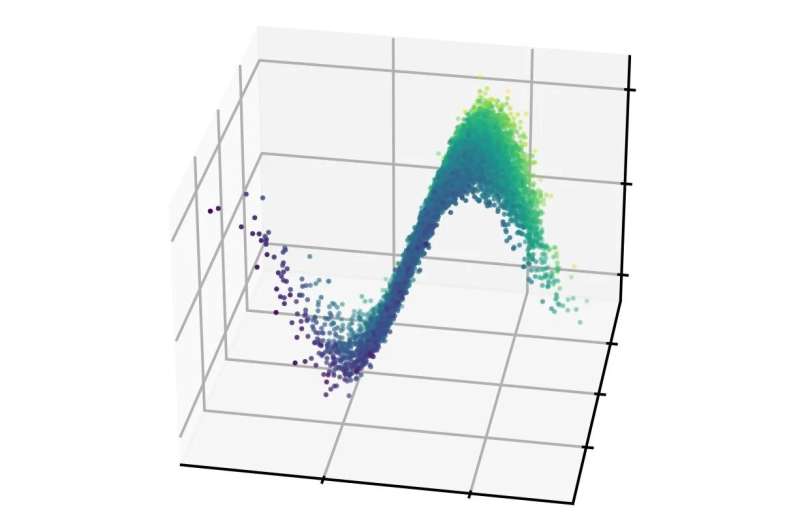This article has been reviewed according to Science X's editorial process and policies. Editors have highlighted the following attributes while ensuring the content's credibility:
fact-checked
peer-reviewed publication
trusted source
proofread
Researchers develop clever algorithm to improve our understanding of particle beams in accelerators

Whenever SLAC National Accelerator Laboratory's linear accelerator is on, packs of around a billion electrons each travel together at nearly the speed of light through metal piping. These electron bunches form the accelerator's particle beam, which is used to study the atomic behavior of molecules, novel materials and many other subjects.
But trying to estimate what a particle beam actually looks like as it travels through an accelerator is difficult, often leaving scientists with only a rough approximation of how a beam will behave during an experiment.
Now, researchers at the Department of Energy's SLAC National Accelerator Laboratory, the DOE's Argonne National Laboratory and the University of Chicago have developed an algorithm that more precisely predicts a beam's distribution of particle positions and velocities as it zips through an accelerator.
This detailed beam information will help scientists perform their experiments more reliably—a need that is becoming increasingly important as accelerator facilities operate at higher and higher energies and generate more complex beam profiles. The researchers detailed their algorithm and method in Physical Review Letters.
"We have a lot of different ways to manipulate particle beams inside of accelerators, but we don't have a really precise way to describe a beam's shape and momentum," SLAC accelerator scientist and lead author Ryan Roussel said. "Our algorithm takes into account information about a beam that is normally discarded and uses that information to paint a more detailed picture of the beam."
Typically, researchers describe the positions and speeds of particles in a beam in terms of a few summary statistics that provide a rough shape of the beam overall—but that approach throws out a lot of potentially useful information. Alternatively, beam scientists can take many measurements of the beam itself and try to reconstruct, sometimes using machine learning, what the beam would look like under different experimental circumstances—but those methods require a lot of data and a lot of computational power.
For this study, the team tried a new approach: They built a machine learning model that uses our understanding of beam dynamics to predict the distribution of particles positions and speeds within the beam, collectively known as the beam's phase space distribution.
To test their ideas, the team used their model to interpret experimental data from the Argonne Wakefield Accelerator at the DOE's Argonne National Laboratory. Including the physics of particle beam dynamics with the experimental data allowed the researchers to accurately reconstruct fine details of the beam using only 10 data points—a task that might take up to 10,000 data points for some machine learning models that don't include a model of beam physics.
"Most machine learning models don't directly include any notion of particle beam dynamics to speed up learning and reduce the amount of data required," SLAC accelerator scientist and co-author Auralee Edelen said. "We've shown that we can infer very complicated high-dimensional beam shapes from astonishingly small amounts of data."
The algorithm can currently reconstruct a model of a beam along its up-down and left-right axes, as if the particle bunch were a pancake moving down the accelerator path. This type of reconstruction is called 4D beam phase space. Next, researchers want to demonstrate the algorithm experimentally on reconstructing full 6D phase space distributions, which includes particle positions and speed along the direction in which the beam is traveling.
Overall, the algorithm is a major paradigm shift in the way we analyze experimental accelerator data at facilities today, Roussel said.
"We can now use particle beam data in a more comprehensive, powerful way to improve our scientific goals at accelerators everywhere," he said.
More information: R. Roussel et al, Phase Space Reconstruction from Accelerator Beam Measurements Using Neural Networks and Differentiable Simulations, Physical Review Letters (2023). DOI: 10.1103/PhysRevLett.130.145001
Journal information: Physical Review Letters
Provided by SLAC National Accelerator Laboratory





















